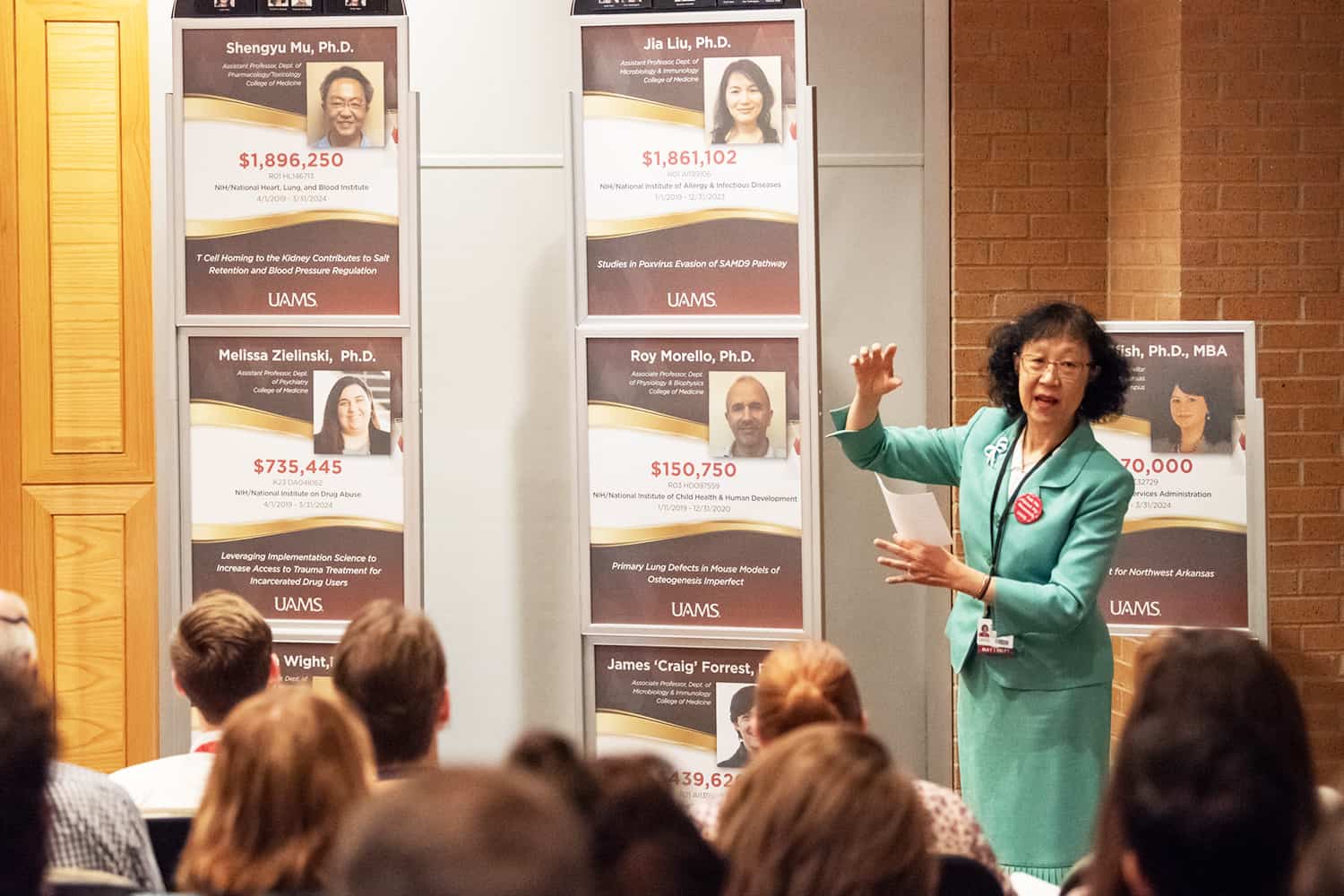Vice Chancellor for Research Highlights Goals for NCI Designation
| July 25, 2019 | Shuk-Mei Ho, Ph.D., UAMS vice chancellor for research, outlined some of what UAMS needs to do to grow and support research at all levels and areas in preparation of an attempt for National Cancer Institute Designation during the July 23 Research Staff Meeting. More than 100 of the university’s research staff, department chairs and center directors attended the meeting.

More than 100 of the university’s research staff, department chairs and center directors attended the meeting.
UAMS, Chancellor Cam Patterson, M.D, MBA, the state Legislature and Gov. Asa Hutchinson are engaged in a coordinated effort to have the UAMS Winthrop P. Rockefeller Cancer Institute become the state’s first NCI Designated Cancer Center. NCI Designation is awarded through a highly competitive assessment process during which cancer centers must demonstrate outstanding depth and breadth of high-quality cancer research, including basic laboratory, patient/clinical and population-based research.
“Winning NCI Designation will mean cancer patients will get better care and have a lower mortality rate. That care will be closer to their homes and give them readier access to “cutting-edge clinical trials,” Ho said. It also will expand the probability of preventing diseases.
“This is an economic engine,” Ho said. “It’s bringing in biotechnology and building infrastructure. We want to bring in world-class researchers, more access to research funding, and don’t forget, for every dollar we spend in this state we also have tax revenues, too. This is extremely important to bring in funding and talent. Human capital is as important to financial capital.”
Ho also gave an overview of where Arkansas stands in competing for research funding and what it can do to be more competitive.
The Blue Ridge Institute for Medical Research ranks states by National Institutes of Health funding. Arkansas is 47th with $58.1 million total funding and $19.59 per capita. Massachusetts is first with $2.87 billion and $428.02 per capita.
“For every dollar from outside the state, there are real incomes, and every dollar has a job multiplying function,” Ho said. “The job multiplying factor could be as high as four to eight, depending on the state and the region.”
Oklahoma receives about $24 per capita in NIH funding, and the Stephenson Cancer Center at the University of Oklahoma recently earned National Cancer Institute designation. Four other states — Indiana ($42), South Carolina ($41), Kansas ($40) and Arizona ($35) — have NCI designations.
“We need to at least get to that level of NIH funding for all research areas to earn NCI designation, too,” Ho said. “To reach the goal, there are some objective measurements, not subjective ones that we really need to look at and work toward.”
At the start of the meeting, applauding researchers accompanied the unveiling of two new, “Research Applause!” vertical displays of posters celebrating UAMS scientists who in recent months have received new grant funding for their research.
Ho thanked Patterson and Stephanie Gardner, Ed.D., Pharm.D., UAMS provost and chief strategy officer, who both helped kick off the meeting by unveiling the two displays, which will be set up in the atrium of the BioMed 1 building and the posters updated as more grant funding is awarded.
Each administrator heading up one of the offices supporting research at UAMS, ranging from grant writing to laboratory animal medicine, gave a three-minute presentation about what their office does and what services they provide to researchers. These presentations were concise and informative to division members as well as research leadership in the room.
A live Poll Everywhere poll was conducted. Researchers answered questions and the results were displayed on a large screen for everyone to see as they voted. Poll questions varied from light icebreakers like: What’s your favorite vacation destination? To more practical questions like: What research area of the campus is most in need of a makeover? The most common answer to the last question was the Barton building.

